
The Planetary Science Archive in 2018
Rosetta, BepiColombo, ExoMars 2016 and Mars Express certainly captured the spotlights, although new functionalities such as the image browser were also provided to the users.
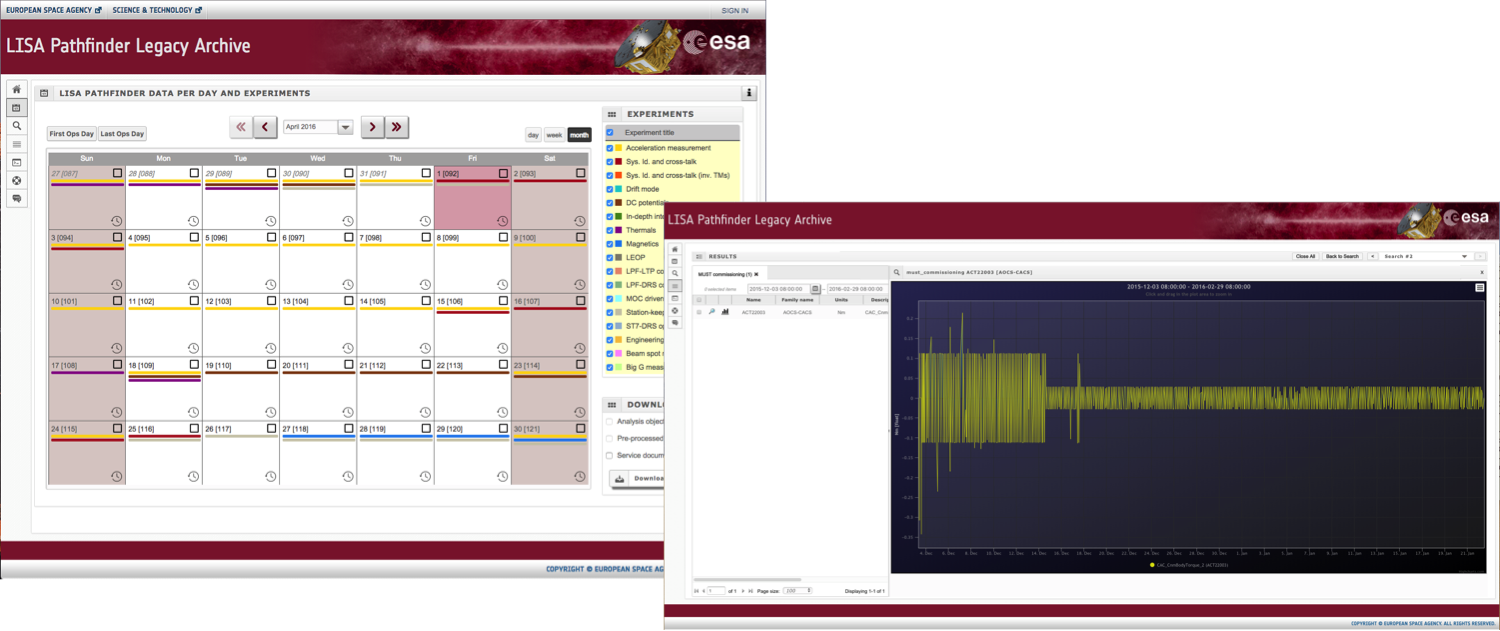
With the release of the final version of the LISA Pathfinder Legacy Archive (LPFSA 2.0) in December, the mission has now entered Legacy Phase.
Although a short mission, LISA Pathfinder (LPF) was a huge success, fully validating the technology to be used in the future gravitational wave observatory LISA, and achieving excellent noise performance that was in some frequency ranges two orders of magnitude below requirement.
But LPF was also an unusual mission in that its operations phase had more in common with the calibration phase of most other ESA missions, than with a standard operations phase.
Because of the nature of the mission, the contents of the archive are also unique.
The LPF Legacy archive contains all the telemetry from the mission (raw packets and MUST database) as well as the scientific timelines acquired during operations at different levels of processing and, most important of all, the final differential acceleration between the two test masses.
Together with the Lisa Pathfinder Science and Technology Operations Centre, the ESDC developed a few new tools allowing an efficient exploitation of such a unique dataset.
Users will be able to select the periods of interest from a calendar interface that traces all the experiments run throughout the mission.
The graphical exploration of the archive is also possible with a fast plotting tool developed by the ESDC.
In the same way Lisa Pathfinder opened up the path for the technology to be used in LISA, its Science Archive is also pointing the way for future gravitational wave observatory archives!
Image: ESA/ESDC

Rosetta, BepiColombo, ExoMars 2016 and Mars Express certainly captured the spotlights, although new functionalities such as the image browser were also provided to the users.
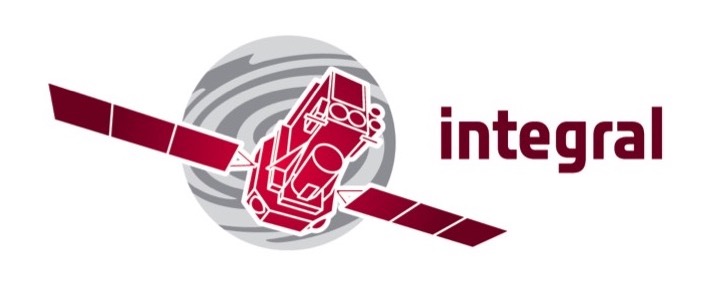
The work to develop the archive, which will be hosted at ESAC, began in January 2019.
Full story

The meeting, held on January 15-16, focused on the completeness and curation of the Ulysses and SOHO archives.
Full story

The group met on February 12-13 in ESTEC to review progress done since the last meeting and to discuss possible ways of promoting the archives.
Full story

A recent study using archival data and new dedicated observations of QSOs suggests that the density of dark energy varies with time.
Full story
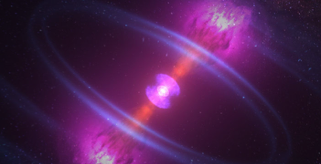
The workshop, entitled "Cross Facilities Collaboration in the Multi Messenger Era", will be held at ESAC on November 19-22, 2019.
Full story
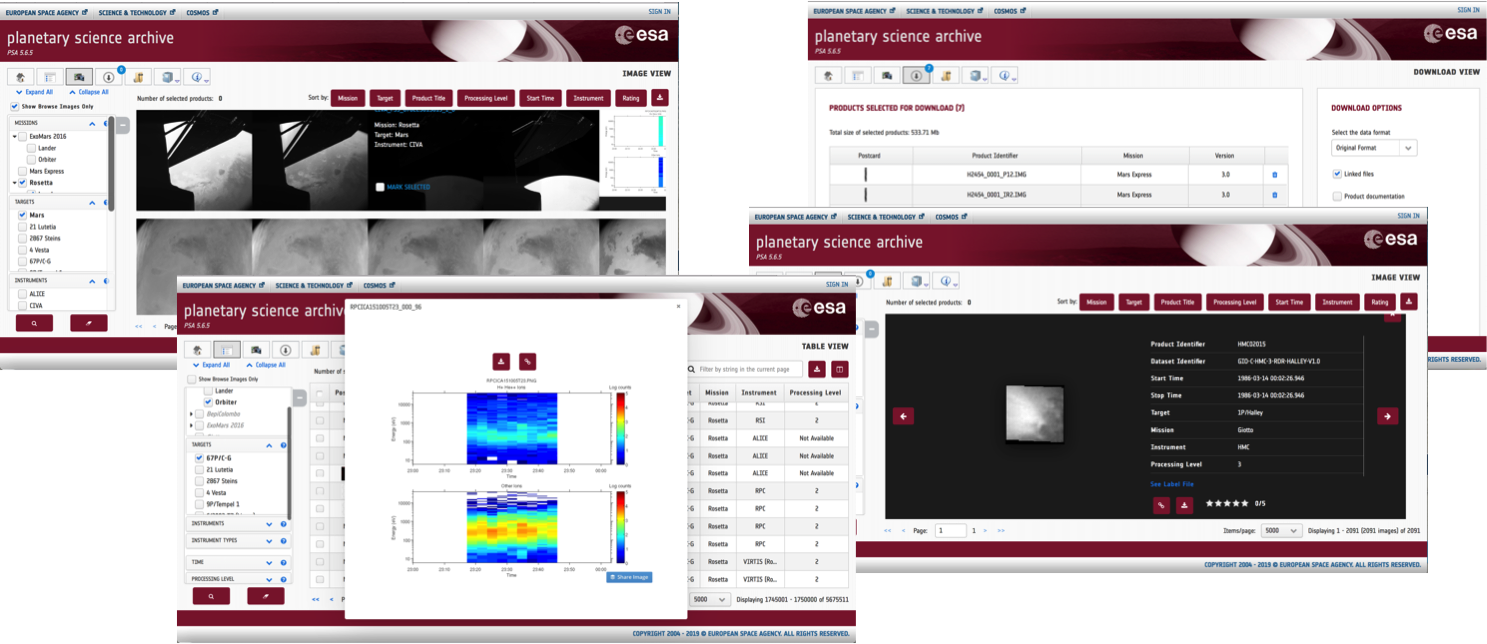
The Planetary Science Archive (PSA) closed year 2018 with new functionalities
allowing users to easily browse products hrough a specific user interface.
The so-called image gallery provide a rapid and visual access to images (and any other types of browse products) of ESA missions exploring the Solar System.
The PSA improved its data download manager, and interoperability access to the archive, so that users obtain with an easier path the products needed.
In addition, heliophysicists can now download specific datasets from the Rosetta Plasma Consortium (RPC) instruments directly in CDF format.
During this year 2018, Rosetta delivered additional datasets to the PSA, in particular calibrated datasets of numerous instruments.
The archive also received the first public datasets from ExoMars
and the first commissioning data from BepiColombo,
which was launched in October of the same year.
Mars Express continued its delivery of data,
including newly processed and scientifically validated subsurface MARSIS data for the entire mission.
On the front of the legacy archives, the PSA publicly released data from the Neutron Mass Spectrometer (NMS) of the Giotto mission,
products that were never archived before.
During the year 2019, the PSA will continue its service to the mission in operations, post-operations and legacy.
A specific effort will be done on improving the content of the legacy archives,
given that past observations are proved to be very useful daily.
And ultimately, the PSA will continue to improve its services with new functionalities, and better designed access to the data.
Of particular interest, and long awaited, the PSA will provide functionalities towards geometrical searches of the datasets.
Image: ESA/ESDC

The INTEGRAL team had their kick-off meeting with the ESDC in late November 2018,
and work on the Legacy Science Archive to be hosted at ESAC officially began in January 2019.
The development of the INTEGRAL Legacy Archive will need to address challenging questions like the definition of the best possible science products for legacy usage
-also of value to the non-gamma-ray astronomy community-
and modern ways to access and provide products based on the full set of available data for specific celestial sources.
The goal is to have a first functional prototype, able to handle interfaces to the data of single observations, by the end of the year.
Images: ESA
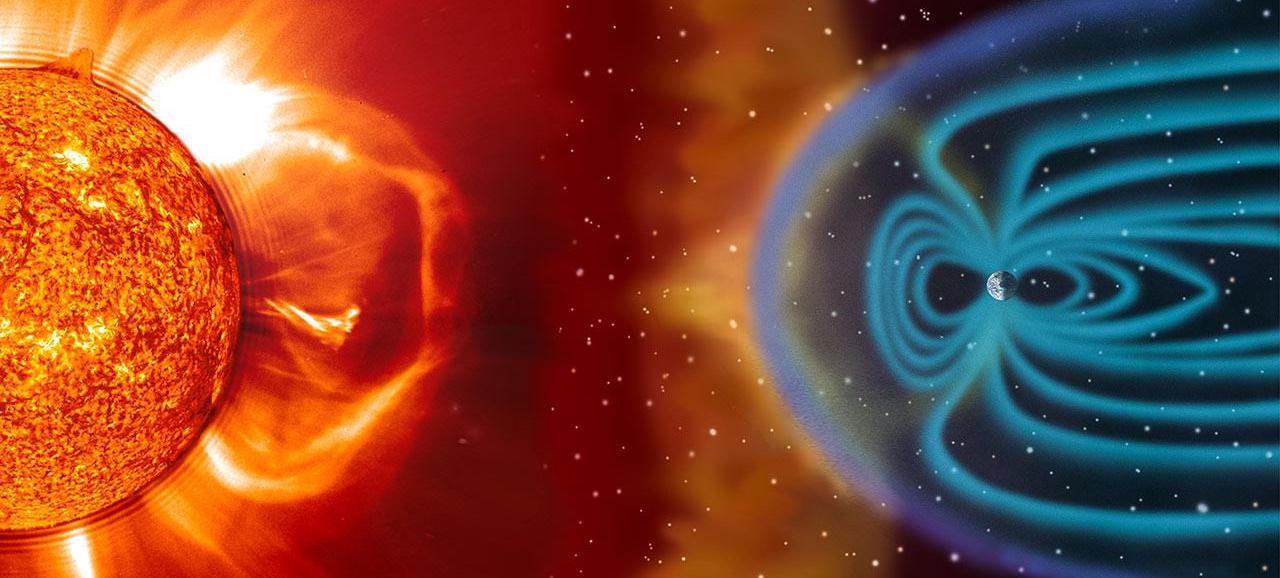
The third meeting of the Heliophysics Archives User Support Group (HAUS) was held on January 15-16 by teleconference.
This was the second meeting dealing with the completeness and curation of some datasets from the Ulysses and SOHO archives.
The possibility to store any added-value datasets to the archives was also discussed.
In particular, the HAUS group acknowledged the unique scientific value of the data available through the Ulysses Final Archive (UFA),
and recommended to improve its operability for a wider access to the data
and easier comparison of Ulysses data with data collected by NASA’s Parker Solar Probe and the upcoming ESA’s Solar Orbiter mission.
Additionally, the scientific interest of a potential link between the ESA Heliophysics archives and solar ground-based measurements was investigated.
Image: NASA/ESA
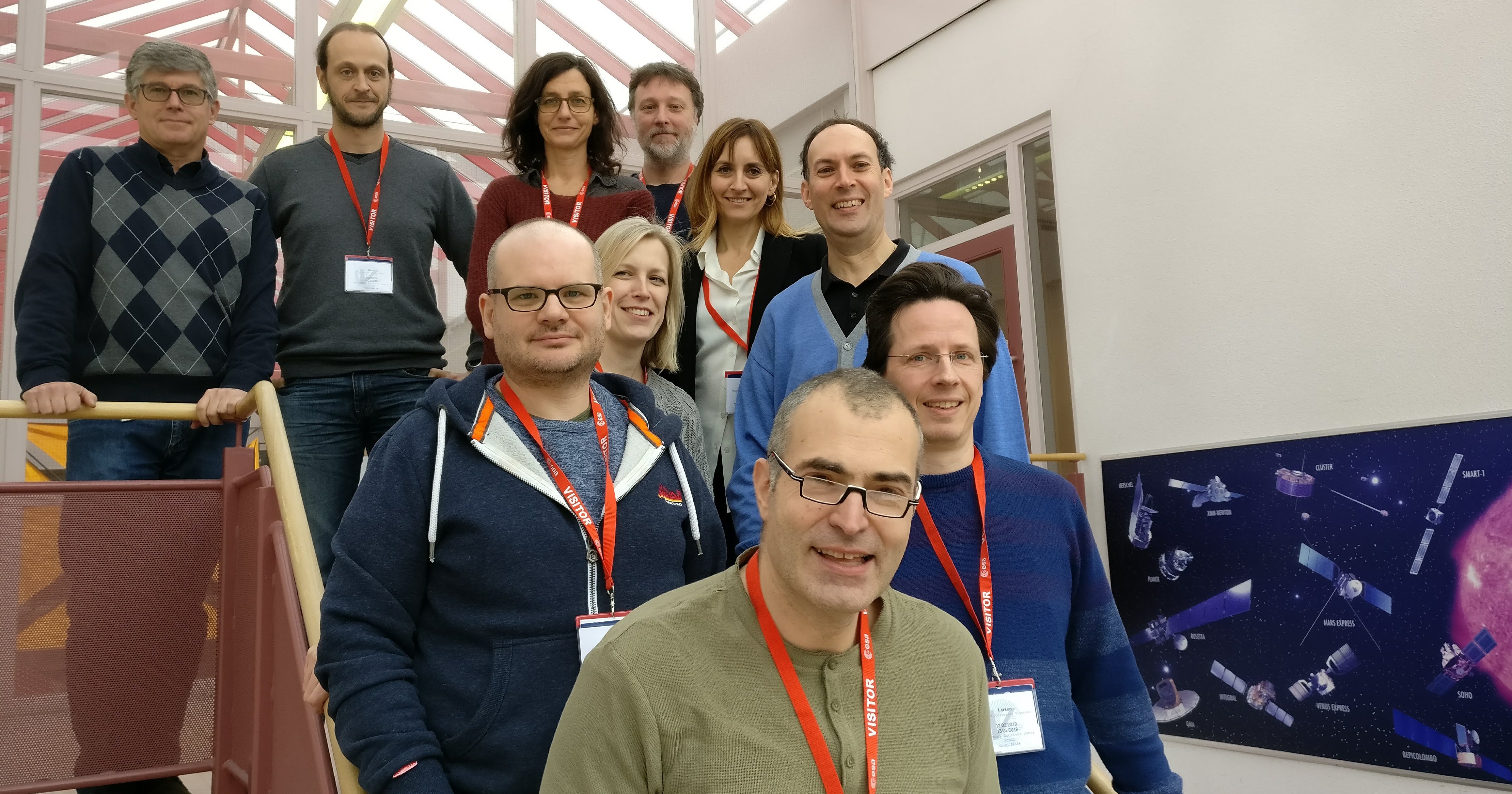
The Astronomy Archives User Group (AAUG) held their second meeting on 12-13 February 2019, in ESTEC, The Netherlands.
Topics under discussion included possible ways of promoting the archives and supporting early career scientists, for example, via a visitor programme;
progress updates on ESASky, on previous recommendations and on actions items.
Also discussed was how to shape the format for an upcoming ESA Astronomy Archives lunchtime session at the European Week of Astronomy and Space Science (EWASS) this year.
And finally, the modalities for a user survey were discussed, with the aim of collating feedback from the community on our ESA Astronomy archives and services.
The user survey is planned to be opened later this year, and will be advertised in this newsletter.
For further information, the minutes of the meeting, along with the AAUG recommendations, will be provided soon on the AAUG web page.
Image: D. Baines

A recent study led by Guido Risaliti (Università di Firenze, Italy) and Elisabeta Lusso (Durham University, UK) used QSOs to measure the expansion of the Universe,
yielding to an unexpected result.
Three years ago, the researchers collected data available in the XMM-Newton Science Archive (XSA) and combined them with ground-based observations from the Sloan Digital Sky Survey (SDSS)
to show that the known relation between the intrinsic ultraviolet and X-ray luminosity of these objects can be used to estimate their distances.
As follow-up work, they applied this relation to an expanded sample that included yet more archival data for over 7,000 QSO
and new XMM-Newton observations of very distant QSOs within a dedicated very large programme aimed at increasing the reliability of cosmological analysis.
These data were complemented with a small number of even more distant and nearby QSOs observed by NASA’s Chandra and Swift X-ray observatories, respectively.
The astronomers were able to derive robust distance estimates for about 1,600 QSOs in their sample, which they then used to investigate the expansion of the Universe.
Comparing their results with the more local sample of type Ia supernovae, they found good agreement in the overlapping epochs;
however, in the earlier phases of the Universe history, which can only be probed with QSO, there was a discrepancy with the predictions of the standard cosmological model.
One possible explanation could be that the density of dark energy increases with time.
Interestingly, such a model would also alleviate the so-called "Hubble tension"
–the discrepancy between different estimates of the Hubble constant in the local universe (based on observations of supernovae and galaxy clusters)
and in the early universe (from observations of the Cosmic Microwave Background carried out by the Planck mission).
The Euclid mission, to be launched in 2022, will help shed more light on these issues.
This is a nice example of how the use of archival data, combined with new observations, can provide exciting results, which can even point to a change of scientific paradigma.
Images: ESA/E. Lusso & G. Risaliti

Please note in your agenda the dates for the upcoming ESA/ESO SCIOPS 2019 Workshop, with the main theme of "Cross Facilities Collaboration in the Multi Messenger Era", addressing the main discussion areas:
The workshop will take place at ESAC in Villanueva de la Cañada (Madrid, Spain) on November 19-22, 2019. Registration and abstract submission will be open early March.
All information can be found on the workshop web page. Feel free to contact the LOC if you have any questions.
Image: ESA